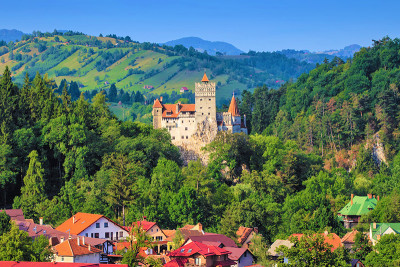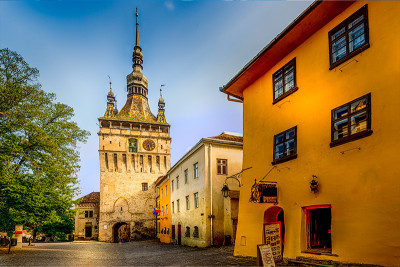Bran Castle, one of the most visited tourist attraction in Transylvania, is perched on a cliff above the surrounding valley in the tourist destination of Bran. The construction of the fortress dates back to November 19th, 1377. Designed as a border fortress, the castle belonged to Brasov for a long period of time, increasing the town’s treasury.
A mobile bridge served as an entrance to this imposing structure with four towers. Gothic passages, silent and narrow stone carved staircases, chambers with arched ceilings, arcades and other architectural elements form an amazing construction. A particular attention was paid to Bran Castle after being donated to the Romanian royal family. Queen Marie ordered the renovation of the castle which became her favorite home and retreat.
The Castle Is A Museum Open To The Public
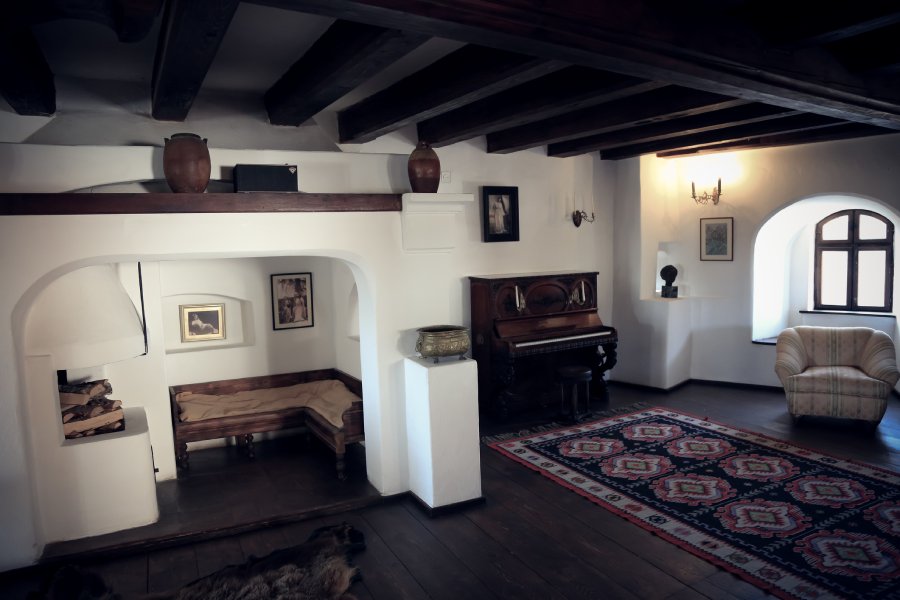
The place has become famous over time and the castle is now a museum exhibiting feudal art (mural paintings dated back to 1512), weapons (a cannon from 1601), Renaissance and Baroque carpets and pieces of furniture, the Music Room of the Queen Mary and its medieval Gothic elements.
Tourists can visit the interior on their own (tickets are available) or by a guided tour. At the bottom of the hill an ethnographic open-air museum was opened evoking the life of local people from the villages of Bran. Household objects, ceramic, furniture, traditional costumes are exhibited.
The Village Museum, located in the courtyard of the castle, invites you to take a journey through time to understand how people lived in the Rucar Bran region and to experience the traditions and the important events in their lives.
The Legend Of Dracula
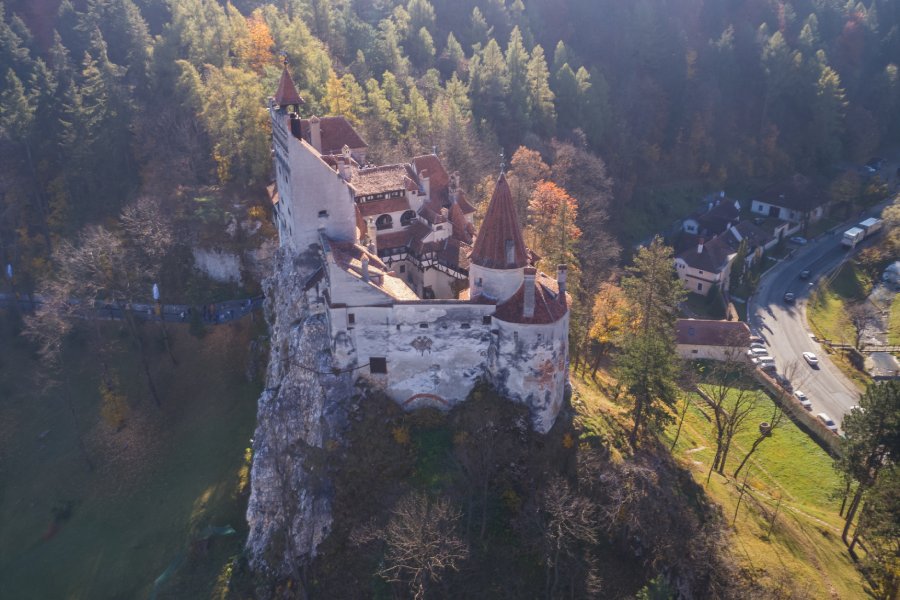
The castle is widely known outside Romania as Dracula’s Castle. The legend that enhanced the castle’s reputation was the story of Dracula, associated with Vlad the Impaler, the Romanian voivode of Wallachia.
The myth that this place was once the home of Vlad Tepes was created around Bram Stoker’s gothic novel Dracula which introduced the character of Count Dracula. There is no evidence that Stoker travelled to Romania or knew anything about this castle.
Moreover, from an historical perspective, Bran Castle has extremely limited ties to Vlad Tepes, most historians agree that Vlad Dracula never owned or lived in the castle. Despite the fact that the stories are not true, the castle still remains a charming place to visit. Today, it acts as a popular tourist attraction that has successfully managed to market itself as Dracula’s Castle.
The History Of Poenari Castle
Poenari castle is another location linked to the legend of Dracula. The history of Poenari Citadel begins with Negru Voda, the voivode who built a tower in the 13th century, following his desire to protect the north of Wallachia.
Vlad the Impaler discovers the place in 1456 and decides that such a good site deserves better exploitation, so he repairs and consolidates the structure by adding four towers, joined by solid brick walls, settling here his second residence, after Targoviste. Actually, Vlad had to restore the original structure, which was seriously damaged by the great earthquake that took place in 1446.
The city is associated with many legends and stories. Legend has it that Tepes was thought to be a cruel and heartless ruler (which probably was) and the boyars plotted to kill him. Only Vlad found out about their plan and forced them to march from Targoviste to Poenari to work on the construction of the fortress. Also, some boyars were impaled. This was a common practice during the late medieval period, also used by Vlad Tepes as a method of execution and torture.
Many people associate the name of Tepes with Transylvania and Sighisoara. The myth became of global interest after Irish writer Bram Stoker published the novel Dracula.
Still, Where Is The Wicked Ruler Of Wallachia Buried?
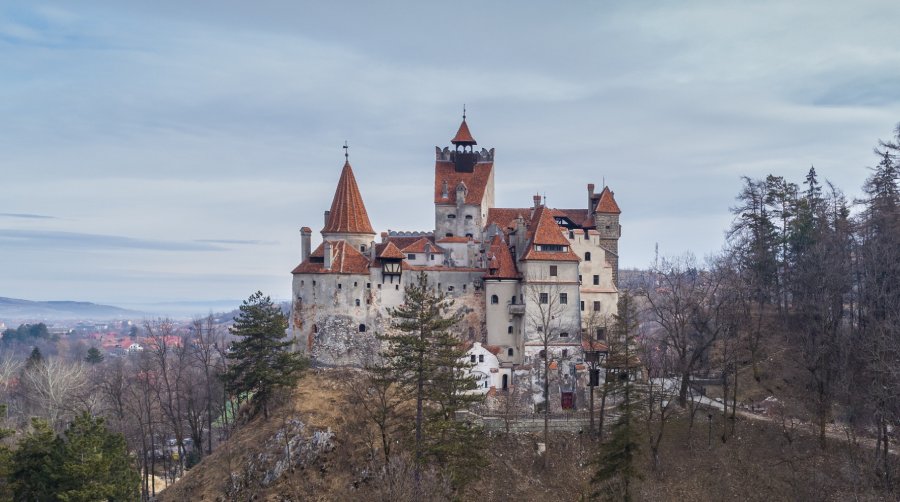
In fact, the final resting place is near Bucharest, at Snagov Monastery. Here, in the church situated in the middle of the Snagov lake on a pile of earth, can be found the tombstone of Vlad Tepes, buried in 1476. Snagov had become one of the ruler’s favorite places, after he decided to move the capital of Wallachia from Târgoyvişte to Bucharest.
The monastery also has the advantage of being located on an island, which allowed the ruler to build underground tunnels, hiding and protecting his wealth here. Alongside, Dracula ordered the construction of torture chambers, where thousands of enemies were sentenced to death.
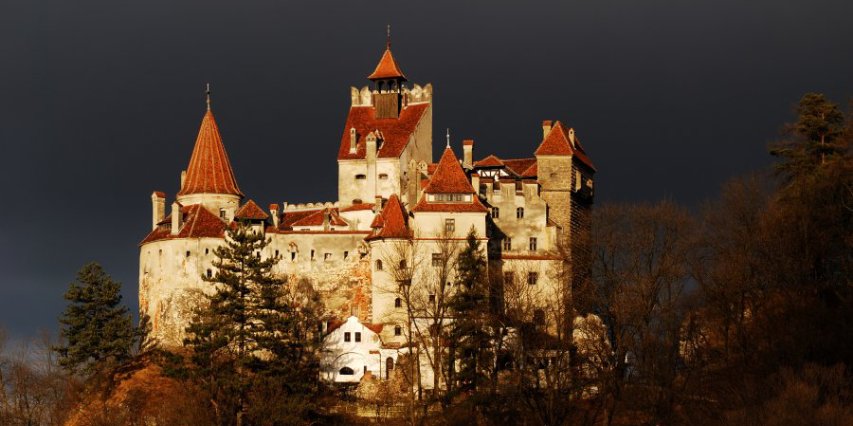
 ES
ES
 IT
IT
 DE
DE
 FR
FR
